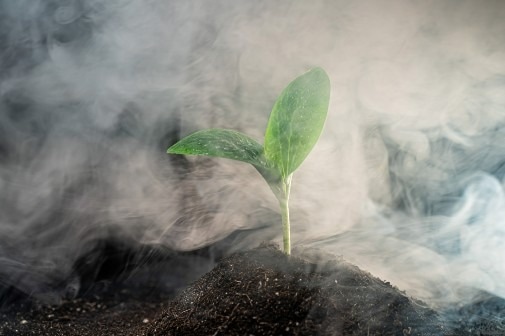A new study published in Nature Plants, conducted by Professor Neil Bruce of the University of York’s Department of Biology and Director of the Centre for Novel Agricultural Products (CNAP), found that DNAN has similar effects to TNT, but accumulates throughout the plant and remains longer.
 DNAN accumulates throughout the plant. Image Credit: University of York
DNAN accumulates throughout the plant. Image Credit: University of York
According to new research, increasing the usage of a chemical compound to substitute TNT in explosive devices has a long-term negative impact on plants.
TNT has been replaced in recent years with DNAN, but nothing is known about how this material affects the ecosystem or how long it can linger in the soil.
For more than a decade, researchers at the University of York have investigated the environmental impact of the explosive TNT. They discovered that the chemical substance, which is employed by the military around the world, persists in the roots of plants, inhibiting growth and development.
Toxic Effects
Similarly to TNT, DNAN reacts with a key plant enzyme, generating reactive superoxide, which is highly damaging to cells. Over the course of our research we have genetically engineered plants to successfully detoxify land contaminated with munitions.
Neil Bruce, Professor, University of York
Bruce added, “Unfortunately DNAN is a very different story to TNT, as it accumulates in the above ground parts of the plant. While plants can use natural processes to reduce the toxicity of TNT, our studies found that plants appear to have no natural way of fighting off the toxic effects of DNAN, meaning that it persists in the plant and is toxic at much lower concentrations.”
Researchers caution that since DNAN is distributed throughout the plant rather than only the root system, as is the case with TNT, there is a higher chance of animals eating contaminated plants and transmitting the poison into the food chain.
Contaminated Land
In previous studies conducted by the York team, genetically engineered grass was grown on soil contaminated with military explosives, and pollutants were successfully reduced to non-detectable levels in plant tissues; however, there is currently no similar approach to remove or reduce DNAN.
The United States is reported to have more than 10 million hectares of military ground contaminated with explosive components, and the US government estimates that remediating unexploded ordinances on US military training ranges will cost $16-165 billion.
Recent years have seen an escalation in military explosives due to global conflicts, and so we are potentially looking at vast scales of pollution, which means there is an urgent need, and interest in, developing sustainable plant-based remediation strategies. We also don’t know what the limits of DNAN toxicity are in humans, so our hope is that our latest research will highlight that more work is urgently needed to understand its effects.
Dr. Liz Rylott, Study Co-Author and Senior Lecturer, Department of Biology, University of York
About This Research
This study, published in the journal Nature Plants, was funded by the US Department of Defense’s Strategic Environmental Research and Development Program (SERDP) and conducted in collaboration with researchers from the US Army Engineer Research and Development Center (ERDC), the US Army Corps of Engineers.